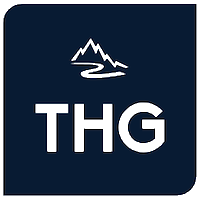4 Elements of a SWOT Analysis
SWOT analysis is a process that identifies an organization's strengths, weaknesses, opportunities and threats. Specifically, SWOT is a basic, analytical framework that assesses what a business can and cannot do, for factors both internal (the strengths and weaknesses) as well as external (the potential opportunities and threats).
Using environmental data to evaluate the position of a company, a SWOT analysis determines what assists the firm in accomplishing its objectives, and what obstacles must be overcome or minimized to achieve desired results: where the organization is today, and where it may be positioned in the future.
A SWOT analysis is usually presented as a square with each of the four areas making up one quadrant. This visual arrangement of the information provides a quick overview of the company’s position. Although all the points under a particular heading may not be of equal importance, there are some insights to be had in seeing how the number of opportunities measures up to the number of threats, and so forth.
STRENGTHS describe what an organization excels at and separates it from the competition: things like a strong brand, loyal customer base, strong balance sheet, unique technology and so on. For example, a hedge fund may have developed a proprietary trading strategy that returns market-beating results; it must then decide how to use those results to attract new investors.
WEAKNESSES stop an organization from performing at its optimum level. They are areas where the business needs to improve to remain competitive: things like higher-than-industry average turnover, high levels of debt, an inadequate supply chain or lack of capital.
OPPORTUNITIES refer to favourable external factors that an organization can use to give it a competitive advantage. For example, a car manufacturer may be able to export its cars into a new market, increasing sales and market share, if tariffs in a country are substantially reduced – the "opportunity" in this case.
THREATS refers to factors that have the potential to harm an organization. For example, a drought is a threat to a wheat-producing company, as it may destroy or reduce the yield of the crop. Other common threats include things like rising costs for inputs, increasing competition, tight labor supply and so on.
A SWOT analysis is a great way to guide business-strategy meetings. It can be very powerful to have everyone in the room to discuss the core strengths and weaknesses of the company and then move from there to defining the opportunities and threats, and finally to brainstorming ideas. Often the SWOT analysis that you envision before the session changes throughout to reflect factors you were unaware of and would never have captured if not for the group’s input.
SWOT can be used for overall business strategy sessions, but it can also be used to for a specific segment like marketing, production, or sales. This way you can see how the overall strategy developed off the SWOT analysis will filter down to the segments below before committing to it. You can also work in reverse and do segment specific SWOT analysis that feeds into an overall SWOT analysis.
